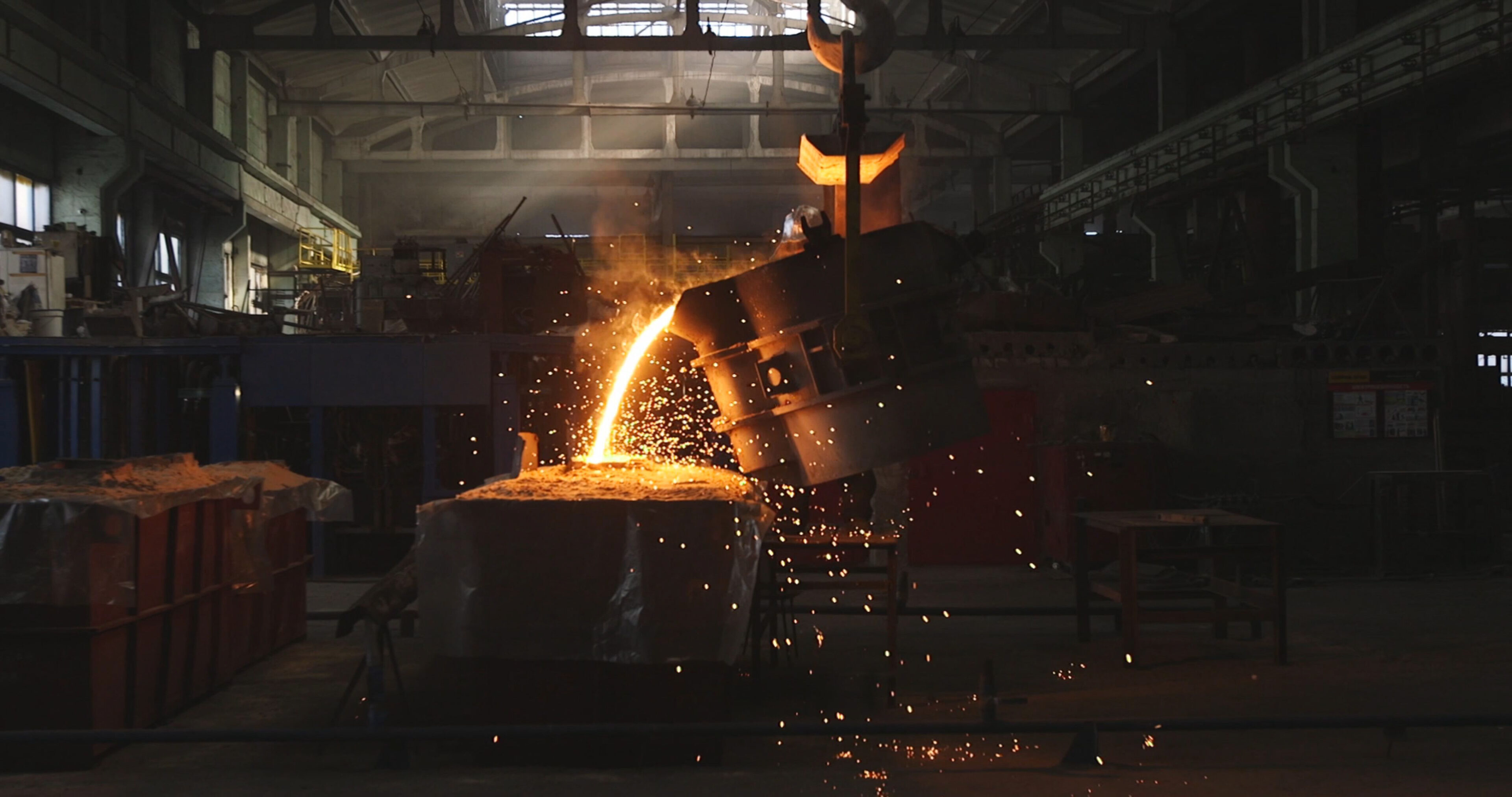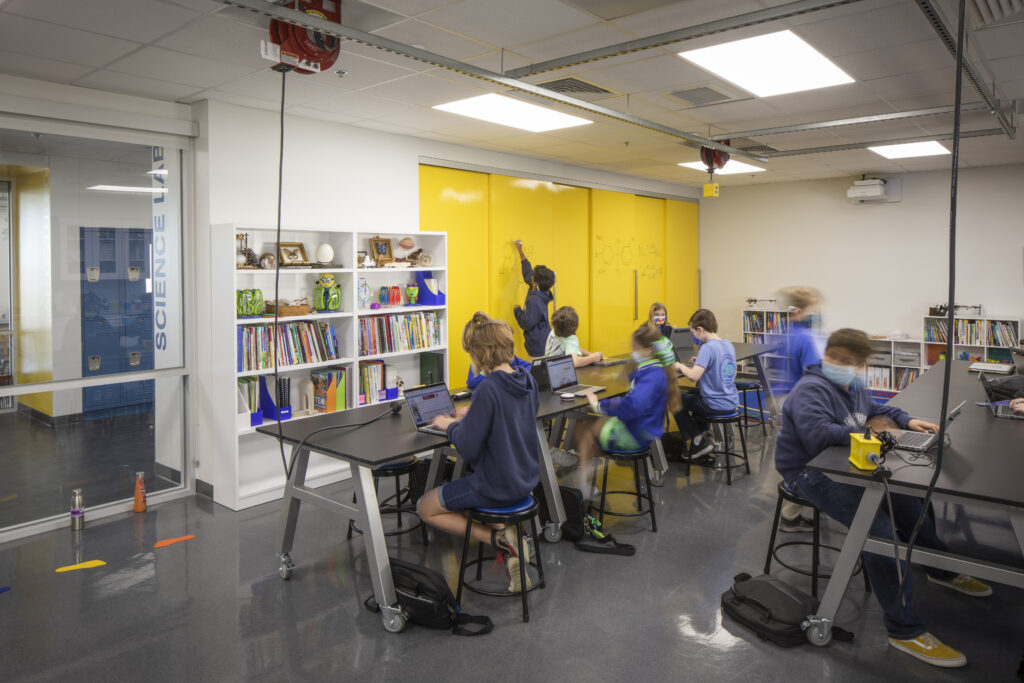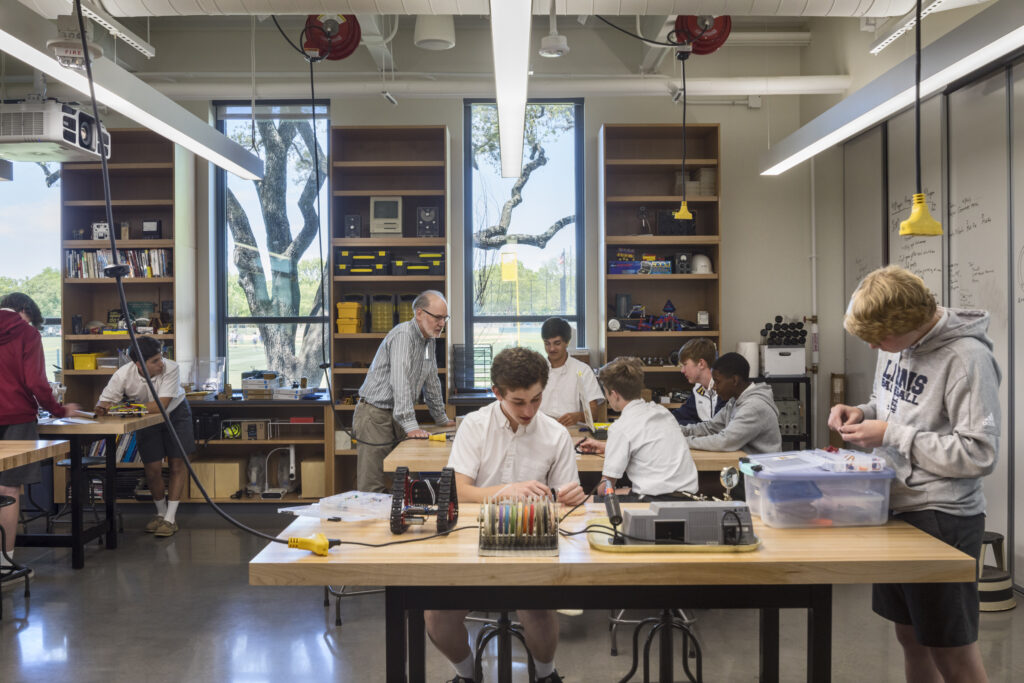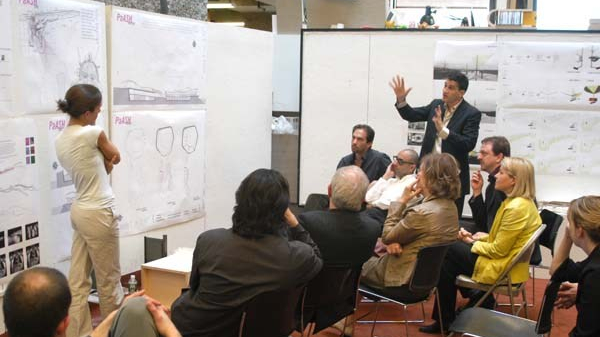The Crucible

crucible /ˈkruːsəbəl
1. a vessel in which metals or other substances are heated to a very high temperature or melted
2. a difficult test or challenge
3. a place or situation that forces people to change or make difficult decisions
As a metaphor for education, the crucible vividly captures the challenging and transformative nature of the learning process. Just as a crucible subjects materials to intense heat to refine and thereby strengthen them, education exposes students to intellectual and emotional challenges that foster growth and development. In this model, education becomes less about the accumulation of facts and more about a process of transformation. In architecture school, each project uniquely tests each student’s vision and adaptability. Well-developed project parameters require students to think critically and creatively, fostering experimentation, learning, and eventually, hopefully, mastery. Students are encouraged to question assumptions, confront complex problems without singular solutions, and engage in critical thinking. This metaphor underscores the idea that facing challenges and developing practical solutions is an essential life skill. In its “The Future of Jobs Report 2018”, the World Economic Forum ranked creativity, critical thinking, and problem-solving among the 10 most demanded skills today and in the future. The crucible is essential for forging well-rounded, capable individuals, and an environment of moderate challenge not only builds resilience and adaptability but also prepares students to navigate the complexities of the real world.
Project-Based Learning: Active, Integrative, and Student-Driven
Project-based learning (PBL) is one of the most influential trends in pedagogy today. Rather than discrete lessons about individual subjects, project-based learning takes a more integrative, more active, and often more collaborative approach to learning. PBL transforms the learning experience by breaking down the barriers between subjects and encouraging students to engage in multidimensional, hands-on tasks. Students are presented with a challenge, question, or problem that requires integration across disciplines, multifaceted tasks that demand complex thought, and connections to be made. Although the initial definition of the project provides a scaffold, students have the freedom to determine the direction and content of their investigations, making them actively responsible for their own learning. The iterative nature of projects, where each step offers new lessons and challenges, reinforces active inquiry and encourages persistence in the face of obstacles. Some of the most committed practitioners of project-based learning are K-12 schools.
According to Kathy Uhr, lower school head and project-based learning expert at Fort Worth Academy, “PBL provides students with the opportunity to dive deeply into their learning while acquiring critical knowledge and skills. It encourages students to stretch themselves and to persevere through the obstacles and challenges they face.”

A core value of PBL lies in its integrative nature. Projects rarely exist in isolation; instead, they require cross-disciplinary thinking. Whether combining aspects of history, art, mathematics, and science in a design project or merging technology with social studies in a community-oriented investigation, learners see firsthand how various fields interconnect. This integration not only makes learning more engaging and relevant, but it also mirrors the complexities of the modern world—where solutions often require a balance between seemingly disparate fields of knowledge. As an example, after completing semester-long research projects in science, students at the Hockaday School used technology to present their findings with creative media by creating QR-coded teaser posters linked to project-specific websites. This type of integrated approach not only builds technical competence but also cultivates digital literacy—a crucial skill in today’s interconnected world.
On a social-emotional level, the collaborative aspect inherent in many PBL projects enhances real-world soft skills such as communication, teamwork, time management, and conflict resolution. When students work in teams, each member brings a unique perspective and set of skills to the table. They learn that the process of negotiation and responsible collaboration is often as important as the final deliverable.
Project-based pedagogy influences the design of learning spaces to support those programs. PBL requires flexible workspace that can be easily reconfigured as projects and group configurations change, and PBL typically requires more square feet per person than conventional square classrooms along a double-loaded corridor. Team workspace and “thinkspace” outside the classroom are also essential for brainstorming and project planning. Storage space is a necessity in any classroom, but a holding place for in-progress work is even more critical when projects require multiple class sessions to complete and other students use the same space for different projects at various times of the day. Schools that proudly exhibit their project-based focus to visitors need space to display and store completed projects as well.
Many graduate and professional schools have adopted a project-based methodology as better training for the business world, and project-based pedagogy has completely transformed the quantity and type of spaces needed in today’s colleges of business. While 20 years ago a business school could plan for approximately 50 GSF per student, today’s leading programs need closer to 65 GSF per student. Although the need for office space has remained relatively constant, this evolution represents an increase in the amount of learning space and a more dramatic increase in the amount of space for collaboration. As an example, the recent addition/renovation of the Cox School of Business at Southern Methodist University increased the number of instruction spaces from 16 to 22 and the number of team rooms from 10 to 25, along with new community space, while maintaining a comparable area for faculty offices and administrative functions. Overall, the transformation represented a total growth in building area of nearly 50%.
Makerspaces: Learning by Doing
Another manifestation of the trend toward project-based hands-on learning is the increasing prevalence of makerspaces. Makerspaces exemplify the idea that real understanding comes from doing. Research and anecdotal evidence overwhelmingly support the claim that students learn best when they engage with course material and participate actively in learning. Psychologists and educators, from Jean Piaget to Howard Gardner to Maria Montessori, have documented that some, if not all of us, learn best through hands-on activities. Makerspaces offer active, creative, and collaborative experiences in which real-world problem-solving builds critical thinking skills and boosts self-confidence. Self-directed and based on inquiry, maker activities foster design thinking and innovation, better learning outcomes, and improved concept retention, as well as experiential learning and social-emotional skills.
The maker movement fosters learning that results from student-centered inquiry, focused on process rather than the finished project at the end of a semester. A makerspace is not solely a science lab, wood shop, computer lab, or art room, but it may contain elements found in all those familiar spaces. The design thinking inherent in maker activities demands creativity and logical reasoning, and making encourages students to step into the role of both creator and critic, evaluating their work from multiple perspectives. This dual engagement not only strengthens technical skills but also builds confidence and a readiness to tackle increasingly challenging projects. By merging the physical act of making with reflective, critical thinking, students cultivate the kind of adaptive expertise that will serve as 21st century career and life skills.
The makerspace at St. Mark’s School of Texas, a successful example, pairs a clean lab for electronics and assembly with a shop space equipped with industrial-scale dust collection. The maker suite also includes environmentally isolated dedicated spaces for metalwork and CNC machining, along with space for bulk materials storage and a staff office. Whiteboards and storage are distributed throughout, from racks for full sheets of plywood to cabinets for hand tools to bins for small electronic parts for robotics. Located near the main entry and central atrium of the Science Center, interior windows put maker activities on display while maintaining acoustic separation and safety for passersby.

Photo Credit: Peter Aaron, Courtesy of GFFdesign
Productive Struggle: The Core Concept Behind Project-Based and Learner-Driven Pedagogies
Productive struggle refers to the process of engaging with difficult tasks and challenges that require sustained effort and problem-solving. Students grapple with complex problems, navigate ambiguity, and iterate on their solutions. Open-ended projects encourage students to explore multiple solutions and learn from their mistakes. This approach fosters resilience: by encountering and overcoming obstacles, as well as learning to think critically and creatively, students build confidence in their abilities and learn to persist in the face of adversity. Integrating the concept of productive struggle into education can create a more holistic and effective learning experience. By embracing productive struggle, educators can prepare students for the realities of professional life and help them develop the skills and mindset for success.
At the core of architectural education, the concept of productive struggle mirrors the real-world complexities that architects face in professional practice. Tight deadlines, budget constraints, and complex—and sometimes contradictory—client demands require architects to navigate difficult circumstances and make critical decisions. Through productive struggle, architecture students learn that encountering difficulties and unforeseen challenges is not a sign of failure but is instead an opportunity for growth and learning. The process of working through these challenges can be transformative as it pushes architects to innovate, adapt, and find creative solutions. Through these experiences, students develop the ability to work under pressure, make informed decisions, and adapt to changing circumstances. By experiencing heat and pressure in a controlled environment, students build the confidence and skills for navigating the challenges of professional practice.
Productive struggle also promotes collaborative learning. It is an architectural maxim that the most effective learning happens not in the classroom but in the studio, where each student works on their own approach to a common and open-ended project. With the iterative studio process, students will test and evaluate multiple approaches until they achieve their desired result. The struggle happens as students advance their design concepts through each iteration and alternative approach. While the instructor provides constructive criticism and coaching, students also learn by collaboration and experimentation, bouncing concepts off one another to test and defend their ideas. The practice of architecture is inherently interdisciplinary, requiring collaboration with professionals from various fields. Whether working together or in parallel, successful architecture students learn to communicate their ideas effectively and incorporate feedback.
Many architecture programs also include a hands-on construction science component, which frequently takes the form of a design/build studio. The architecture program at the University of Texas at Arlington is building on a curriculum based on the idea of the studio as the central node, in which students implement knowledge gained in specialized classes like structures and history. Since 2000, the program has been offering evolving versions of a design/build studio.
According to Julia Lindgren, Assistant Professor in the Department of Architecture at UTA, the D/B studio has a steep learning curve as students manipulate tools and materials, and it builds confidence as the students master new skills. Real-world factors influence design thinking as building components do not necessarily align as perfectly in the field as they do in the Rhino model, or when a simple detail may require space to insert a wrench to tighten a bolt, or when, like it or not, gravity cannot be ignored. Perhaps more important, Lindgren believes that, by working with real public sites and clients, the D/B studio helps students develop an appreciation for delivering projects that respect the public interest.

In perhaps the most literal representation of the crucible metaphor, every architecture student has been forged by the formative experience of standing alone in front of a jury, explaining to an unfamiliar audience the process and ideas that led to the project on display. Like the corresponding metallurgical operation, a final review requires the student to refine and distill a complex and evolutionary thought process into coherent visual exhibits and a concise narrative of ideas. Architects and other professionals will continue to exercise this skill throughout their careers.
Integrative, active, and often collaborative, project-based pedagogies make students responsible for their own learning, facilitating cross-disciplinary connections and challenging students to engage deeply with complex problems and to persevere through obstacles. This process mirrors the real-world complexities that professionals face in many fields. Architecture students learn to navigate ambiguity, make informed decisions, and iterate on their designs. This process helps them build confidence in their abilities and prepares them for the unpredictable nature of working in professional practice. By embracing struggle as a part of the learning process, students become more adaptable and innovative in their approach to meeting challenges.
Ultimately, the productive struggle in architecture school and in other areas of education aims to cultivate a mindset of perseverance and lifelong learning. It teaches students that encountering difficulties is not a sign of failure but an opportunity for growth. By developing the ability to persist through challenges, students are better equipped to tackle complex problems and contribute to the advancement of the field. This approach not only enhances technical skills but also nurtures creativity and resilience. Students can transfer these qualities to other areas of life and work, helping them navigate challenges, achieve their goals, and prepare for the complexities of the modern world.